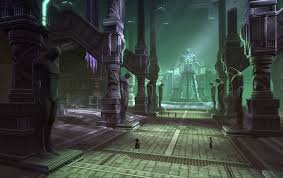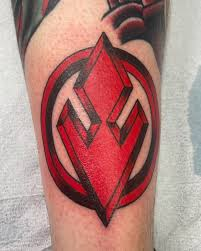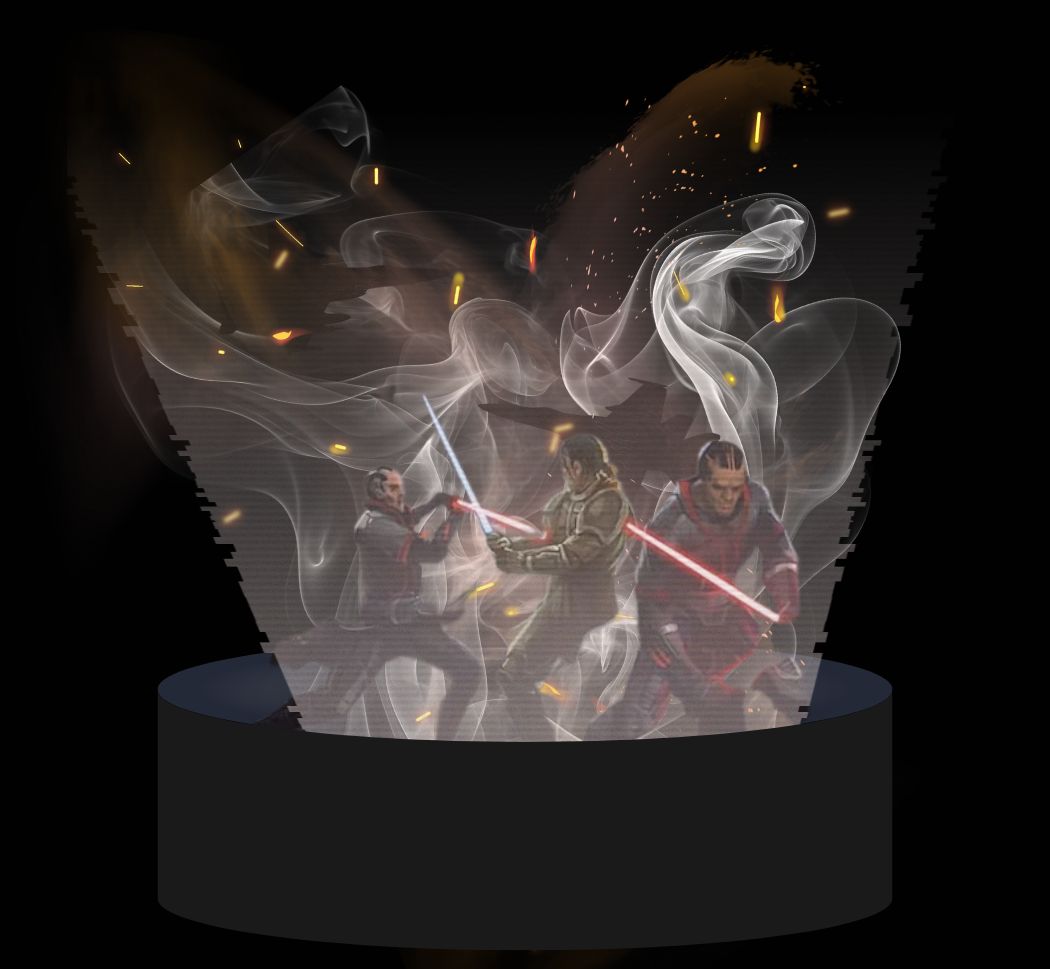The Sith Symbol: Meaning, Origins, and Legacy in Star Wars

The Sith symbol, defined by its sharp geometry and crimson color, represents power, order, and the dark side’s philosophy of domination. Rooted in the ancient Sith species and refined through eras like the Old Republic, it appears on temples, Holocrons, and Sith Eternal iconography. Contrasted with Jedi and Republic emblems, it reflects hierarchy and aggression, aligning closely with the Sith Code. Evolving across canon and Legends, it remains a powerful emblem of fear, ambition, and the enduring allure of the dark side.
The Sith Symbol: Meaning, Origins, and Legacy in Star Wars
The Sith symbol—often rendered in ominous shades of crimson and red—stands as a potent emblem of dark power, looming dominance, and unyielding ambition within the Star Wars mythos.

Its sharp angles and forbidding design evoke dread and a sense of dangerous authority, symbolizing the Sith's eternal struggle for control and conquest in stark contrast to the Jedi’s ideals.
This article delves into the origins, stylistic evolution, and enduring cultural impact of the Sith symbol, tracing its manifestation across both Star Wars canon and the expanded Legends universe.
More than just a logo, the Sith symbol encapsulates the philosophy and identity of the Sith Order—a legacy marked by secrecy, conflict, and a relentless pursuit of power through the dark side of the Force.

By exploring its visual elements, historical roots, and modern interpretations, we can better understand how this emblem has come to represent not only villainy but also a complex and compelling ideology that has fascinated fans and creators alike for decades.
What Is the Sith Symbol? A Visual Breakdown
The Sith symbol is typically depicted as a symmetrical, angular design—most commonly in a deep red or crimson hue—, much like their lightsabers, that often resembles a hexagonal or starburst shape.

Its pointed edges and sharp lines conjure images of aggression and precision, differentiating it distinctly from the softer, more harmonious Jedi or Galactic Republic emblems.
Variations of the symbol appear throughout Star Wars media: from the intricate designs on Sith Holocrons and Sith temples in The Clone Wars animated series to stylized versions used in promotional materials for the Sith Order.
This signature red insignia’s aggressive aesthetic symbolizes the Sith’s combative nature and their embracing of conflict as a path to power.
Unlike the Jedi’s flowing, wing-like crests or the circular seals of the Republic, the Sith symbol projects an image of lethal order and rigid hierarchy—its geometry reflecting the cold control and razor-sharp focus characteristic of the dark side.
The Ancient Origins of the Sith Symbol
Rooted in the ancient Sith species who inhabited Korriban—the planet considered the birthplace of the Sith—the Sith symbol likely evolved from early cultural markings and totems used in Sith temples and shrines.

These earliest Sith Lords, such as Ajunta Pall and Marka Ragnos, presided over an order where iconography was both a spiritual and martial statement, imbuing crests with the dark side’s malevolent energy.
The symbol’s sharp geometry can be interpreted as an evolution from these archaic sigils, designed to visually represent strength, ferocity, and domination.
In the earliest Sith culture, where might and mysticism were inseparably intertwined, these symbols served as dark beacons, rallying followers and signifying allegiance to the Sith cause.
Whether inspired by natural patterns or crafted by Sith sorcery, these early emblems laid the groundwork for the distinctive iconography that would persist through millennia of Sith legacy, from secretive cults to galactic empires.
The Symbol of the Sith Empire (Old Republic Era)
During the Old Republic era, the Sith Empire coalesced a more formalized emblem to mark its authority and military might, prominently depicted in the Knights of the Old Republic (KOTOR) games and The Old Republic MMORPG.

This symbol maintained the characteristic angularity and red color scheme but was refined into a hexagonal seal-like design that adorned military banners, holocrons, and official insignias, becoming synonymous with Sith rule and imperial power.
Within the Old Republic context, the emblem proclaimed dominance and fear, unifying Sith warriors and commanders under a visual banner that signified ruthless control. It represented not only an order of dark side practitioners but a political and military force that challenged the Republic at every turn.
This Sith Empire logo became a historic icon of oppression and rebellion, echoing the Sith’s enduring sway over galactic conflict.
The Role of the Sith Symbol in Canon
In the modern Star Wars canon, the Sith symbol has appeared variably yet symbolically, marking places and artifacts associated with dark side power. Sith temples on worlds like Malachor prominently feature the emblem carved into their architecture, signaling ancient darkness and lingering corruption.
Concept art for Vader’s Fortress in Rogue One hints at similar motifs, reinforcing the connection between the symbol and Sith ascendancy. Additionally, the symbol appears on Sith Holocrons, ancient repositories of forbidden knowledge, and is alluded to in Star Wars: The Clone Wars and Rebels series.
With the advent of new media, such as The Rise of Skywalker, the symbol resurfaces within the Sith Eternal cult imagery, tying the emblem to the rebirth of Sith fanaticism and final order ambitions.
Its reinterpretation in merchandise, comics, and holocrons cements the symbol’s place as a pervasive marker of Sith influence, evolving while retaining its ominous and compelling essence.
Iconography and the Sith Code: A Philosophical Alignment
The Sith symbol’s aggressive angularity and symmetrical balance mirror the tenets of the Sith Code—centered on strength, power, passion, and the breaking of chains that bind one’s potential.

Its sharp points evoke the Sith doctrine of conflict as a necessary catalyst for evolution, conveying a philosophy where order is achieved through domination and the mastership of self and others.
This design principle aligns with the Sith obsession with hierarchy and mastery over the Force, where symmetry represents control and precision rather than harmony. The emblem’s form can be seen as a visual metaphor for the Sith journey: a discipline shaped by harnessing chaos, standing in stark opposition to the Jedi’s ideal of unity and peace.
Comparison with Jedi and Galactic Symbols
When compared to the Jedi Order crest—characterized by wings, radiance, and soft curves symbolizing protection and harmony—the Sith symbol’s jagged edges and crimson hue stand out as statements of confrontation and dominance.

Likewise, the Galactic Republic seal’s circular and balanced form reflects governance, unity, and democratic ideals, while the Galactic Empire’s emblem employs rigid symmetry signifying authoritarian order but retains a certain sleekness absent from the Sith’s more aggressive appearance.
The Sith symbol’s intimidation arises not just from color but from form—designed to unsettle and assert power.
Its visual language communicates a combative identity, distinguishing it clearly from the emblems of peacekeepers and rulers, driving home the philosophical rift between light and dark sides of the Force within the galaxy.
The Sith Symbol in Modern Star Wars Media
Throughout modern Star Wars content, the Sith symbol appears in diverse settings—etched into the Sith shrines and Holocrons of The Clone Wars, emblazoned on the forbidding Malachor temple in Rebels, and woven into the iconography of the Sith Eternal cult in The Rise of Skywalker.
Each appearance ties the symbol to moments of dark side resurgence or ancient Sith legacy, reaffirming its status as an enduring mark of sinister influence.
Beyond narrative use, the symbol also saturates promotional art and merchandise, often highlighting figures such as Darth Sidious or the Final Order to evoke the Sith’s shadow over the saga’s ongoing storylines.
It serves both as an artistic motif to signal dark allegiances and as a fan-recognizable badge of Star Wars’ most formidable antagonists.
Cultural Legacy: The Sith Symbol in Fan Culture and Merchandising
The Sith symbol has transcended on-screen usage to become a major icon embraced by the Star Wars fan community worldwide.

It appears on tattoos, custom decals for vehicles, and elaborate cosplay costumes, signifying personal affinity with the dark side or admiration for the Sith lore.
Collectibles such as Sith Holocron replicas and Sith Wayfinder models often feature the emblem, becoming treasured items among enthusiasts and collectors.
Moreover, fan artists and independent filmmakers frequently reinterpret the Sith symbol, introducing variations that explore alternate dark side sects or aesthetics, thereby expanding its cultural presence.
These fan-driven creative outputs reflect the symbol’s deep-rooted magnetism and its capacity to inspire stories beyond official canon.
Alternate Versions and Hidden Variants
Star Wars lore contains multiple lesser-known versions and variants of the Sith symbol, illustrating its adaptability and the diversity within Sith traditions.
The Sith Eternal cult’s emblem seen on Exegol offers a twisted, ritualistic reinterpretation of the classic design, signaling secret sects or cults diverging from mainstream Sith imagery.
Additionally, ancient Sith runes and glyphs seen in sources like Jedi: Fallen Order and The Rise of Skywalker Visual Dictionary suggest a complex tapestry of insignias used across time.
These variants underscore that the Sith symbol is not monolithic but evolves to represent different schools of dark side practice and cultural identity.
They hint at secret histories and unexplored facets of Sith lore, revealing the symbol’s layered significance within both the galaxy’s mythology and fan speculation.
Final Thoughts: Why the Sith Symbol Still Resonates
The Sith symbol endures as more than decorative art—it is an evocative beacon of fear, power, and the seductive promise of darkness.
It serves as a universal shorthand for ambition unrestrained and the perilous path of the dark side, resonating across generations of fans and creators. Much like the Jedi radiate peace and hope through their pristine crests, the Sith symbol pulses with a ruthless energy that commands attention and respect.
Its continued relevance lies in how the emblem encapsulates the eternal conflict at Star Wars’ heart: the battle of ideologies rendered tangible in symbols and characters.
The Sith insignia reminds us that dark power, though dangerous, is endlessly compelling—representing a legacy of strength, temptation, and the cost of unchecked desire that shapes the galaxy’s ongoing saga.












.jpg)
